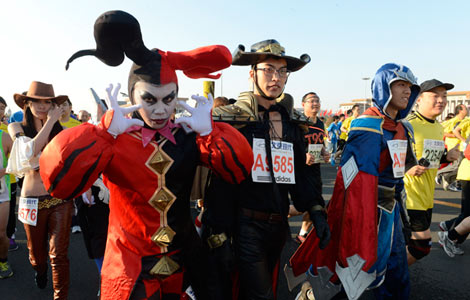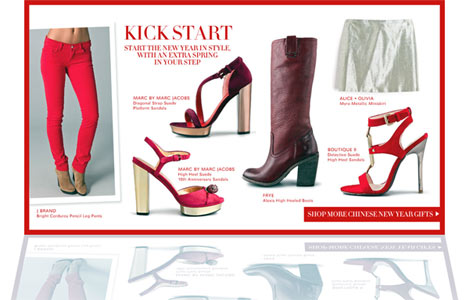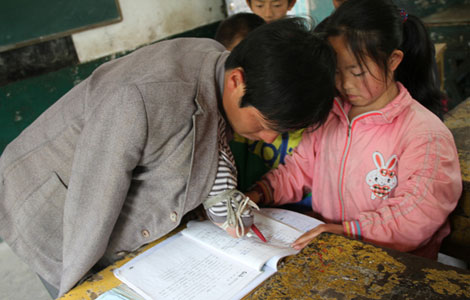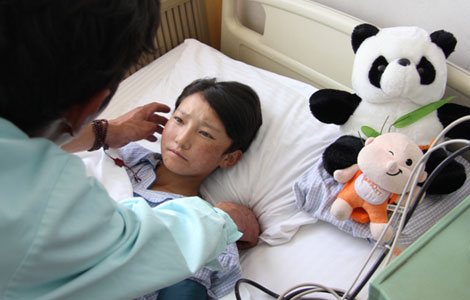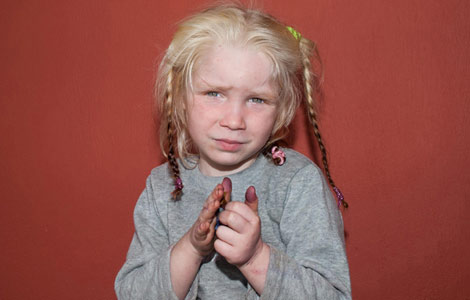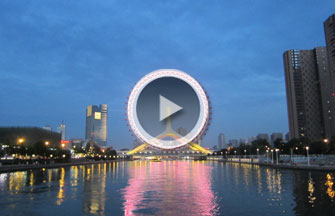Always a great day for gold
Updated: 2013-10-21 07:06
By Zhong Nan and Zhao Ruixue (China Daily USA)
|
||||||||
The city of Zhaoyuan lays its golden eggs in many different baskets. In the Western world, jewelers and many other retailers pin most of their hopes for success on what they expect will be the busiest time of the year, Christmas. For many, that trading period, beginning as early as November and stretching until Christmas Eve, can make or break their annual finances.
However, Zhaoyuan is in the fortunate position of being able to rely on a steady and healthy stream of income all year round.
Yes, there can be spikes in sales at gift-giving times such as Christmas and Valentine's Day, but the gift that keeps giving to the gold dealers of Zhaoyuan is a Chinese penchant for buying gold bars and jewelry to diversify their investments.
That interest is no more evident than in Zhaoyuan, where many street names contain the Chinese character jin, meaning gold. The same applies to thousands of business names. In the city, too, you are just as likely to hear people chatting about gold as about the weather. Cars with number plates from other provinces driving into the city's gold and jewelry-selling markets, are a dime a dozen.
Yang Lixin, director of the gemological training center of China's National Gem and Jewelry Technology Administrative Center, says that between April and June, Chinese flocked to gold and jewelry shops in huge numbers, as the price of gold hovered around a three-year low.
In contrast with demand elsewhere, sales of gold in China rose to 706.36 metric tons in the first half of this year, up 53.7 percent on the corresponding period last year, the China Gold Association in Beijing says.
Liu Chunqing, deputy general manager of Jindu Zhaoyuan Gold and Gem Jewelry Palace Co Ltd, the biggest gold and jewelry trade market by sales in North China, says those sales have come on the back of concerns that the prolonged global recession will add to inflationary pressures.
The Zhaoyuan market's biggest rival, in South China, is located in the Luau district of Shenzhen.
"Compared with buying shares and investing in wine or jade, buying gold, especially gold bars, acts as a hedge for investors," Liu says.
Indeed, gold differs significantly from other investments.
"People cannot make a fortune overnight from gold trading, but they certainly won't lose everything instantly in gold trading, either."
The weight of gold sales in China totaled 832 tons last year, the strong growth pushed greatly by sales of gold bars, sales of which rose 87 percent to nearly 279 tons. Jewelry sales rose 44 percent to 383.86 tons. At the same time, industrial use of gold fell 1.6 percent.
The value of sales at Jindu Zhaoyuan gold and jewelry market was 3.7 billion yuan ($606 million) last year, 14 percent higher than a year earlier. More than 77 gold and jewelry retailers operate at the market, most selling gold bars and jewelry on a wholesale basis.
Jindu Zhaoyuan says it plans to expand the market soon, inviting more large companies such as Chow Tai Fook Jewelry Group Ltd of Hong Kong and Chow Tai Seng Jewelry Co Ltd of Shenzhen to set up shops in Zhaoyuan's economic and technology development zone next year. The aim is to improve the vertically integrated business model and provide a wider range of jewelry products to the market.
"We also plan to invest 120 million yuan and add 300 trained workers to open a new jewelry plant in Zhaoyuan over the next three years under a new brand to further make inroads in the domestic market," Liu says.
The company, which employs 630 people, now has one jewelry factory and a small diamond-cutting workshop in Zhaoyuan, mainly conducting an original equipment manufacturing business.
Cheng Zhiwei, deputy general manager of Zhaojin Gold and Silver Refinery Group, a gold and jewelry product supplier to retailers in Zhaoyuan, believes more Chinese will invest in inlaid jewelry, gold coins and bullion sooner or later.
"Over the next five years, inlaid jewelry such as diamonds, rubies and sapphire rings and necklaces will play a major role in China, in addition to gold bars, because people want to further diversify their investments and as they develop different tastes in gemstones."
Last year, the value of domestic jewelry companies' sales totaled 193.4 billion yuan, 33 percent higher than in the previous year, the Gems and Jewelry Trade Association of China in Beijing says.
(China Daily USA 10/21/2013 page16)
Most Viewed
Editor's Picks

|

|

|

|

|

|
Today's Top News
China has to brace for next dollar drama
Life of Pi artwork on display
Canada welcomes China to invest
No criminal charges in Asiana crash death: DA
US deal key to nabbing fugitives
Trending news across China
Seattle high-tech summit talks 'green'
JPMorgan reaches $13b deal
US Weekly

|

|

